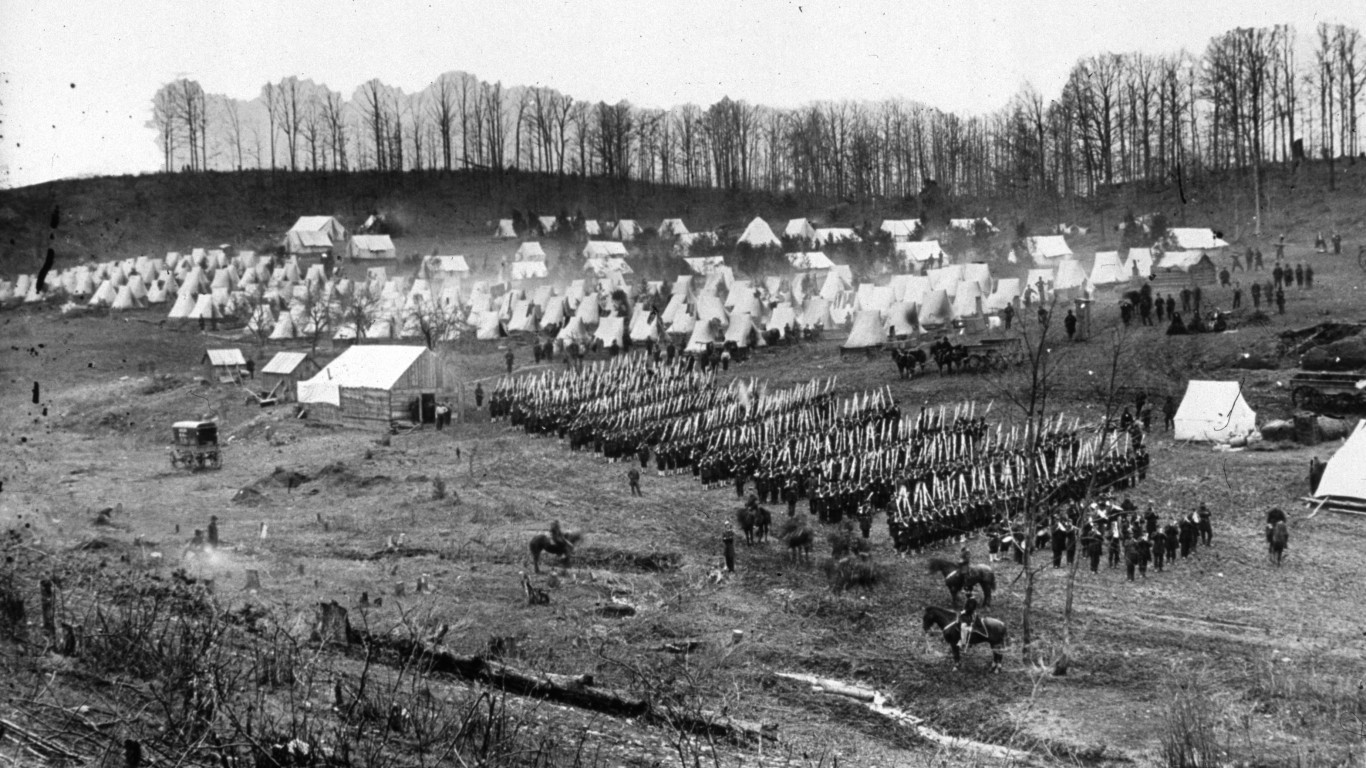
This article was written with the assistance of A.I. technology, and has been edited and fact-checked by Melly Alazraki.
The Union’s Army of the Potomac was the largest army of the Civil War, with an estimated 120,000 troops, according to the Essential Civil War Curriculum project. The Army of the Potomac, which was created in July 1861 and was active until June 1865, was led in order by George B. McClellan, Ambrose E. Burnside, Joseph Hooker, and George G. Meade. The Army of the Potomac was involved in some of the most important battles of the war, including the Battle of Antietam, the Battle of Fredericksburg, the Battle of Chancellorsville, and the Battle of Gettysburg.
Throughout the war, the Confederate army was outmanned and outgunned by the Union armies. The Confederacy had between 750,000 and 1.2 million soldiers, while the Union had nearly 2.7 million troops. The Union also had more resources and better equipment. Despite several notable setbacks, the Army of the Potomac helped turn the tide in favor of the Union victory.
The Battle of Antietam, fought in September 1862, was the bloodiest single-day battle in American history. Nearly 23,000 soldiers were killed, wounded, or missing. The Army of the Potomac, led by Gen. McClellan at the time, was able to repel the Confederate advance, led by Gen. Robert E. Lee. Though widely considered a tactical draw, the battle was a strategic Union victory and marked a turning point in the war, as it discouraged the European powers from recognizing the Confederacy.
The Battle of Fredericksburg, fought in December 1862, marked a setback for the Army of the Potomac and the Union cause. Gen. Burnside, now in command of the Army of the Potomac, led Union troops in a series of attacks on Confederate positions on Marye’s Heights. Under Gen. Lee, the Confederates were able to hold their ground and inflict heavy casualties on the Union army, preventing them from advancing further towards Richmond.
After Fredericksburg, Burnside was replaced as commander by Gen. Hooker, who himself was relieved of duty following another loss at the Battle of Chancellorsville in May 1863. During the battle, the Army of the Potomac attempted to flank the Confederate army, but the plan was unsuccessful. The Confederates, despite heavy casualties, were able to defeat the Union army and drive them back across the Rappahannock River.
The Battle of Gettysburg, fought in July 1863, was the largest and most important battle of the Civil War. The Army of the Potomac, now led by Gen. Meade, was able to repel the Confederate advance. This Union victory was a turning point in the war, as it prevented the Confederacy from advancing any further into Union territory.
Click here to see the 20 largest armies assembled during the Civil War.
Are You Ahead, or Behind on Retirement? (sponsor)
If you’re one of the over 4 Million Americans set to retire this year, you may want to pay attention.
Finding a financial advisor who puts your interest first can be the difference between a rich retirement and barely getting by, and today it’s easier than ever. SmartAsset’s free tool matches you with up to three fiduciary financial advisors that serve your area in minutes. Each advisor has been carefully vetted, and must act in your best interests. Start your search now.
Don’t waste another minute; get started right here and help your retirement dreams become a retirement reality.
Thank you for reading! Have some feedback for us?
Contact the 24/7 Wall St. editorial team.
